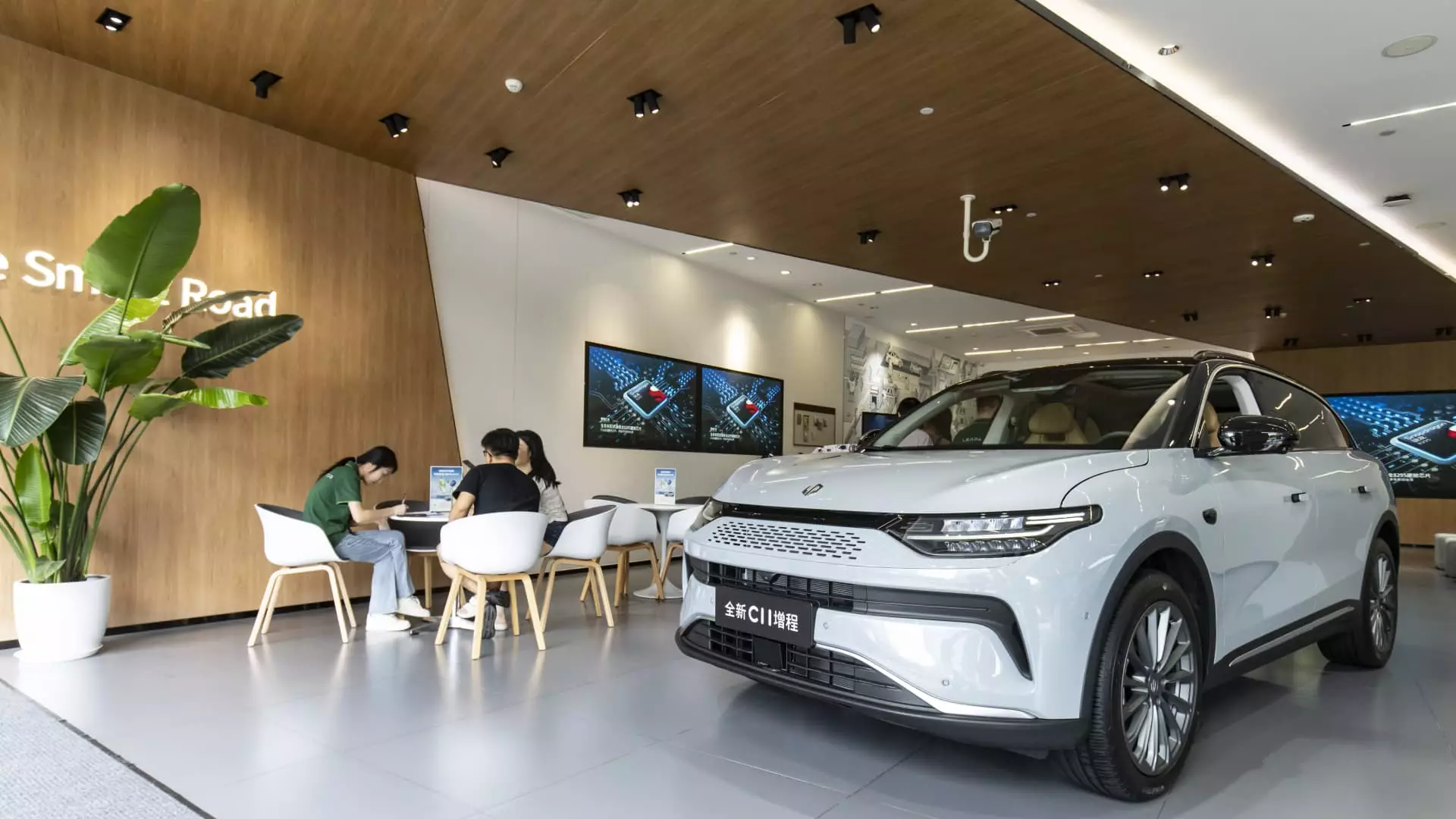In recent years, the automotive industry in China has witnessed a significant shift towards hybrid-powered vehicles, overshadowing the earlier trend dominated by battery-only electric vehicles (EVs). As consumer preferences evolve, former stalwarts like gasoline-driven cars are increasingly being sidelined. BYD, the largest player in this market, has reported that nearly 58% of its 4.3 million passenger vehicle sales in 2024 were hybrid models. This trend exemplifies an important pivot in consumer behavior as they seek alternatives that combine the benefits of electric driving with the reliability of traditional fuels.
BYD’s impressive sales milestone can be viewed as a clear indication of the rising demand for hybrid vehicles in China. The company’s shift in product mix – with hybrid vehicles comprising a larger share than battery-only counterparts, unlike the previous year – reflects a strategic adaptation to market realities. This broader acceptance of hybrids suggests that consumers are not ready to fully commit to battery-only options, instead valuing the flexibility that hybrids provide. The success of BYD can also be attributed to aggressive marketing tactics and a deep understanding of local market needs.
Tesla, a benchmark for battery electric vehicles globally, is also reinforcing its foothold in the Chinese market, maintaining steady sales numbers of over 600,000 vehicles for consecutive years. Despite the rise of hybrids, Tesla’s performance illustrates that a robust market for battery-only cars still exists, albeit one that may be stabilizing. However, the competition is intensifying, as companies like Li Auto have achieved remarkable sales figures, highlighting a growing appetite for vehicles that offer an extended driving range without compromising on electric capabilities.
Li Auto’s success, largely attributed to its hybrid offerings, signifies an important trend where consumers are gravitating towards solutions that offer practicality alongside sustainability. While Tesla aims to innovate in battery technology, the likes of Li Auto are tapping into hybrid systems that accommodate various consumer needs, thereby gaining market share.
The entry of other manufacturers into the hybrid sector, such as Leapmotor and Zeekr, underscores the fierce competition within the new energy vehicle segment in China. Zeekr’s and Nio’s attempts to diversify their offerings with hybrid models further reflect the industry’s shift and the need to stay relevant. These companies are not only responding to evolving market demands, but also adjusting to regulatory frameworks that favor environmentally friendly alternatives.
The influx of established brands like Xiaomi into the EV market, with promising sales figures for their new electric models, shows that even tech companies are keen to carve out a niche in this burgeoning sector. Their unique strategies and innovations could pose a challenge to traditional manufacturers that may not be as agile in implementing hybrid solutions.
The role of the Chinese government in shaping the electric and hybrid vehicle landscape cannot be overstated. A well-defined policy framework, including incentives for new energy vehicle purchases, reflects a strategic push to encourage Chinese consumers to transition away from traditional gasoline vehicles. The improving access to license plates for hybrids compared to fuel-powered vehicles is a testament to this proactive stance.
As urban centers like Beijing lead this initiative, the alignment of municipal policies with broader national goals enhances the feasibility of adopting hybrids. The increase in new energy vehicle sales—recording more than 50% of all passenger vehicles sold in specific months in 2023—illustrates a pivotal moment in the auto industry, as consumers embrace alternatives that promise both efficiency and sustainability.
As China’s automotive landscape continues to transform, the rise of hybrid vehicles represents more than just a trend; it signifies a critical juncture in consumer preferences and governmental policies. With the likes of BYD, Tesla, and emergent players driving innovation, the hybrid model stands poised for growth alongside traditional gasoline alternatives. The industry’s adaptation to consumer needs—balancing reliability with sustainability—will undoubtedly shape the future trajectory of vehicle development in China. The evolution is ongoing and as new technologies continue to emerge, the balance between electric and hybrid solutions will likely redefine what consumers seek in their next vehicle.



Leave a Reply